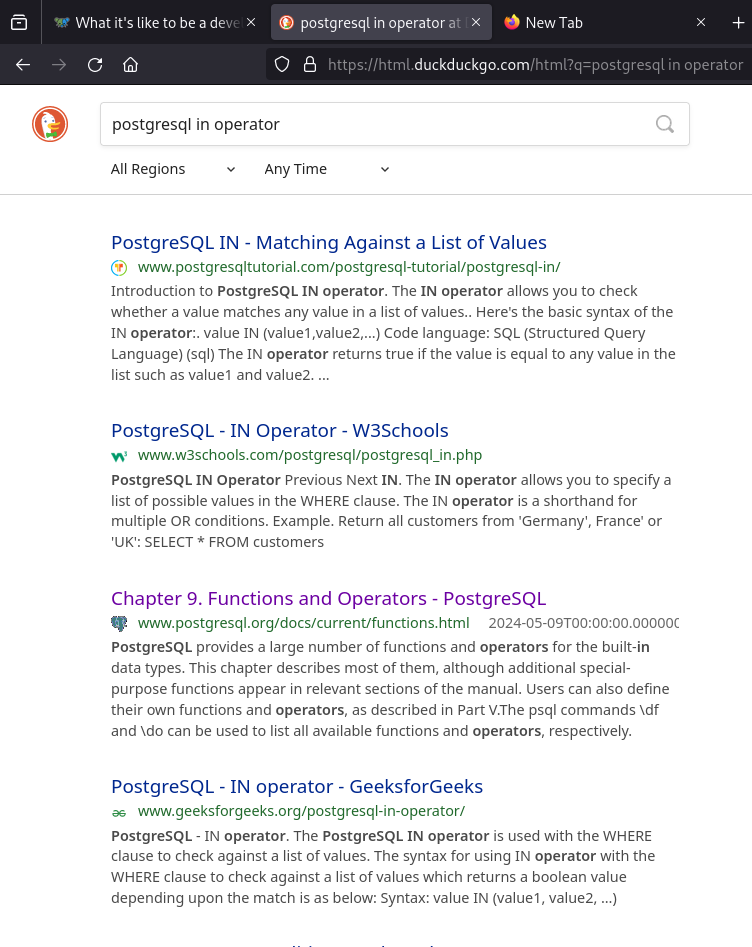

Historically I’ve gone for Lenovo laptops, at least for their business segments they’ve been good with releasing updates to fix security issues for many years. Having a promise of 5 years of firmware updates would be lovely though.
#nobridge


Historically I’ve gone for Lenovo laptops, at least for their business segments they’ve been good with releasing updates to fix security issues for many years. Having a promise of 5 years of firmware updates would be lovely though.


For some reason I imagine a toilet that automates a stool test and blood test and gives you a health report every month.


AUX, MicroSD, smaller format and big battery was the reason I went for my Sony Xperia 10 IV (budget phone, got mine new for 260€) device.
Sadly their software updates are only for two years as otherwise I would’ve been interested in the Sony Xperia 5 series (compact flagship). I’m not paying flagship prices for a phone that stops updating after two years.
I hope that the EU regulation forcing 5 years of updates for phones and tablets starting June 2025 will allow me a compact flagship phone with aux, big battery and updates for a long time.
https://repair.eu/sv/news/new-eu-rules-smartphones-and-tablets-will-follow-new-ecodesign-requirements-by-june-2025/


Info that could help others help you:
House or flat?
Renting or owning?
How large an area do you need to heat?
How many rooms?
Temperature and savings:
Where I live they say that a house with people living in it should be at least 16°C (~60°F) to handle the moisture we generate.
Humans should have at least 18°C (64°F), preferably 20°C (68°F).
That means that you could close doors and let unoccupied rooms have lower temperature than the rooms you use.
If you’re stuck with space heaters then you’ll save quite a lot that way.


OpenWrt with 802.11r and 802.11s configured will work as a mesh network with roaming functionality.
https://openwrt.org/docs/guide-user/network/wifi/mesh/80211s
https://openwrt.org/docs/guide-user/network/wifi/roaming
Not many Ruckus devices that are supported though:
Brand - Model - Supported Version
Ruckus - ZF7025 - 23.05.2
Ruckus - ZF7321 - 23.05.2
Ruckus - ZF7341 - 23.05.2
Ruckus - ZF7343 - 23.05.2
Ruckus - ZF7351 - 23.05.2
Ruckus - ZF7352 - 23.05.2
Ruckus - ZF7363 - 23.05.2
Ruckus - ZF7372 - 23.05.2
https://openwrt.org/toh/start?toh.filter.supportedcurrentrel=22.03|23.05


Software: OpenWrt - https://openwrt.org/docs/guide-user/network/wifi/roaming
Devices: Supported devices found here - https://openwrt.org/toh/start?toh.filter.supportedcurrentrel=22.03|23.05


pfsense and opnsense are very similar. The pfsense devs has acted like jackasses towards the opnsense gang. They are both great for a router/firewall/vpn device. I would use external access points with them.
I think there are more addons to pfsense than opnsense.
OpenWrt is great when it comes to WiFi, but I find it much less intuitive to use for router/firewall parts. Could be that I am used to the way pfsense and opnsense do things.
Neither do switching from what I know, so pair the router with a switch of your choice.


I’m so happy I went with a self-hosted Forgejo for my code repo.


Next time I build a PC, I plan to spend extra on hardware that can run games decently while producing as little heat as possible. My current PC is like a space heater when it’s running and it’s unbearable to play games on it for any extended periods during the summer months.
The only reason I went for an 80+ Platinum PSU instead of an 80+ Bronze PSU is to make it generate less heat (and the fact that the platinum had a really nice price at the time). Doing it for power savings isn’t worth it, but getting a cooler case is nice.
https://www.tomshardware.com/news/what-80-plus-levels-mean,36721.html


An ultra-marathoner’s attempt to “run” from Florida to Bermuda in an inflatable bubble was cut short when the Coast Guard towed him back to land – for the second time.
https://edition.cnn.com/2016/04/25/us/bubble-man-rescue/index.html


Gonna check it out!
Is it easy to setup automatic responses to the alerts, f.e. restarting a service if it isn’t answering requests in a timely manner?
Have you used it together with Windows Servers too?


I’ve used SNMP a lot together with nagios so I should be able to handle it. :D


I’ll have a look! Cheers!


Cheers! I’ve heard of Prometheus/Grafana but VictoriaMetrics was a new one. Gonna look into it!


For signal I imagine you’ll find the best answers here:
https://github.com/signalapp/Signal-Android/blob/main/CONTRIBUTING.md
https://community.signalusers.org/c/development/android-development/22


" in" appears 25 times on the page to be exact, with 16 of those being in the table of contents and 9 being in the text afterwards.
“in” appears 54 times, as you know end up hitting “string” and so on.
Had I known that the functions table of contents was as short as it is I would probably have just scrolled.


After which ctrl+f " in" takes you to the correct chapters. I do agree that a direct link would be more helpful.
And for learning postgresql I agree it isn’t very helpful - using their tutorial links, w3schools or something like udemy if you prefer video format is the way to go in that use case.
I remember back when you were told to learn to work with the documentation, not memorize it, because you will always have access to it as a reference. Maybe bookmarking reference books/documentation will make a come back as the search engines degrade.


Your result returns version 9.0 that went EOL 2021, same as Googles fourth result in OP.
nvm, second result is correct.


I definitely feel the pain when it comes to worthless results nowadays. Though in this case DDG comes through:

Adding documentation to the search makes the “correct” page soar to the top:

Alternatively, you can create new users from the command line.
This can be done as follows:
If synapse was installed via pip, activate the virtualenv as follows (if Synapse was installed via a prebuilt package, register_new_matrix_user should already be on the search path):
cd ~/synapse
source env/bin/activate
synctl start # if not already running
Run the following command:
register_new_matrix_user -c homeserver.yaml
This will prompt you to add details for the new user, and will then connect to the running Synapse to create the new user. For example:
New user localpart: erikj
Password:
Confirm password:
Make admin [no]:
Success!
This process uses a setting registration_shared_secret, which is shared between Synapse itself and the register_new_matrix_user script.
It doesn’t matter what it is (a random value is generated by --generate-config), but it should be kept secret, as anyone with knowledge of it can register users, including admin accounts, on your server even if enable_registration is false.
https://element-hq.github.io/synapse/latest/setup/installation.html